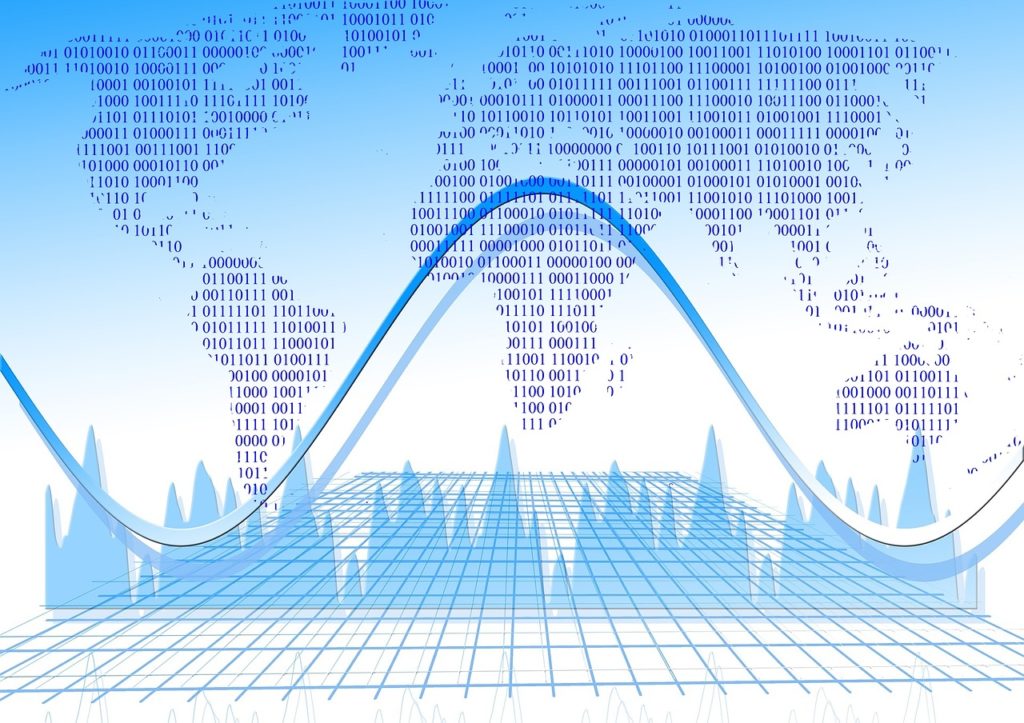“Suddenly, everyone’s a data analyst.”
I laughed when my friend said this to me. Mostly because I knew it was true.
We were in a Zoom meeting in the early days of the COVID-19 pandemic (it was only about six weeks ago, but it feels like years!) and observing how many of our, shall we say, less-than-data-oriented friends were suddenly sharing tons of data and charts as we all tried to make sense of the craziness that was consuming us.
Even more fascinating, however, was that it wasn’t just that all of the data and charts were now relevant to our very existence, but that everyone now seemed to be a data analyst.
We weren’t just sharing them. We were all doing so with a healthy dollop of our own analysis — whether anyone wanted it or not!
A friend of mine even took to hosting his own, for lack of a better term, data analysis show via Facebook Live in which he would do a walk-through of the latest CDC and WHO data (it was actually quite informative and useful!).
But it wasn’t just everyday citizens that were now obsessed with data. It was governments, too.
And what has become exceedingly clear is that those countries who had the best data and were able to use it most effectively have been able to spare their citizens the harshest of the pandemic realities.
In short, this pandemic has handed a big win to those who have invested in big data — and has provided an object lesson for everyone else.
And it’s a lesson that enterprise leaders must learn.
Big Data and Analytics: Winning the Day
Scarred by SARS almost two decades ago, many Asian countries have been long preparing for the next major pandemic outbreak. As a result, Asian principalities have, as a group, fared better than most other nations around the world.
Even amongst this group, however, Taiwan has stood out.
As the Journal of the American Medical Association (JAMA) explained: “Taiwan is 81 miles off the coast of mainland China and was expected to have the second highest number of cases of coronavirus disease 2019 (COVID-19) due to its proximity to and number of flights between China.”
Instead, as of April 28th, the country has only 429 confirmed cases and 6 deaths.
While there are several reasons the country has been able to keep this disease at bay, its use of big data and analytics is chief among them. “Taiwan quickly mobilized and instituted specific approaches for case identification, containment, and resource allocation to protect the public health,” explained Drs. Jason Wang and Robert Brook, and Chun Ng in their JAMA report.
“Taiwan leveraged its national health insurance database and integrated it with its immigration and customs database to begin the creation of big data for analytics; it generated real-time alerts during a clinical visit based on travel history and clinical symptoms to aid case identification,” they continued. “It also used new technology, including QR code scanning and online reporting of travel history and health symptoms to classify travelers’ infectious risks based on flight origin and travel history in the past 14 days.”
It is a similar story in other countries that are also faring well, such as South Korea, Singapore, and Hong Kong.
The data, it would seem, speaks for itself.
Data Alone is Not Enough
If you haven’t yet heard much about how countries like Taiwan and South Korea are using data and technology to combat the pandemic, you will. This story is just beginning to unfold.
What is missing from much of the coverage about the use of big data, however, is that it is not just the data that has made the difference.
It has been the ability to integrate disparate datasets and then take action based on the insights the data generates that has been the most significant factor in combating this outbreak.
“On January 27, the [Taiwanese] National Health Insurance Administration (NHIA) and the National Immigration Agency integrated patients’ past 14-day travel history with their NHI identification card data from the NHIA; this was accomplished in 1 day,” (emphasis added) Wang, Brook, and Ng shared. “Taiwan citizens’ household registration system and the foreigners’ entry card allowed the government to track individuals at high risk because of recent travel history in affected areas. Those identified as high risk (under home quarantine) were monitored electronically through their mobile phones.”
Very early in the process, the Taiwanese government marshaled their data resources, determined how they needed to bring their data together, and were able to execute targeted actions based upon the insights the data generated.
Privacy Concerns Remain
The benefits of Taiwan’s big data-powered response to the coronavirus crisis is clear: while most of the world has been on an extended, economy-killing shutdown, Taiwan’s schools and businesses have remained open.
Still, all of this data usage has come at a price: the sacrifice of privacy.
The balancing act between the value that data can deliver and the risks to privacy is something that should be very familiar to enterprise leaders.
Still, industry observers are noting how the balance is shifting amid the pandemic. “COVID-19 has revealed much starker trade-offs between personal privacy and the collective benefits of technology,” writes Neil Paine in Big Data Is Helping Us Fight The Coronavirus — But At What Cost To Our Privacy? for FiveThirtyEight. “In South Korea, for example, the ability to retrace an infected person’s steps using credit card transactions and cellphone tracking data is part of the country’s (largely successful) response to the virus.”
This situation is reinforcing a trend that has been developing for some time, namely that people will willingly trade privacy for some form of perceived value — particularly in a time of crisis.
Paine noted, in fact, that “one recent Harris poll showed that a sizable, bipartisan majority of Americans would favor a public coronavirus registry and be willing to share phone location data to get alerts about infected people being nearby.”
The lesson is clear. When it comes to leveraging big data, privacy will always be a concern. But the greater risk will be in failing to leverage the data in the first place.
My Take: No More Excuses
As an enterprise leader, you may be thinking that beyond the personal toll, none of this has much to do with you.
You’d be wrong.
As it is already doing with things like the work from home (WFH) movement, grocery delivery, and the ascendency of Zoom, The COVID-19 pandemic will irreversibly accelerate the prominence — and acceptance — of a data-centric and data-first world.
Going forward, everyone will be asking for the data as the foundation of understanding — no matter their rank in the data-geek hierarchy.
More importantly, there will be increasingly little patience for organizations and leaders that do not understand and recognize the importance of data and which do not present and use it as the foundation of their management approach.
We are already seeing this phenomenon play out on the world stage.
The challenges with data privacy and governance will remain, and will likely increase. But the message from customers, employees, and all stakeholders will be clear: fail to leverage data at your peril. No excuses.
Julie and Neel Shah, a married power couple (she is an AI researcher and roboticist at MIT, and he’s a physician and public health researcher at Harvard) recently penned an article in the Harvard Business Review entitled Fighting Coronavirus with Big Data.
“We believe the answer lies in computation. We need to put as much data and computing power into the problem as we can, and now,” they wrote. “We have many technological advantages over those fighting that pandemic [the 1918 Spanish Flu] a century ago. In many ways, this is our most meaningful Big Data and analytics challenge so far.”
They were, of course, talking about our need to bring data to the COVID-19 fight.
But they may as well have been talking about everything you do from now on.
Tag/s:Business TransformationCOVID-19Digital DisruptionPandemic





